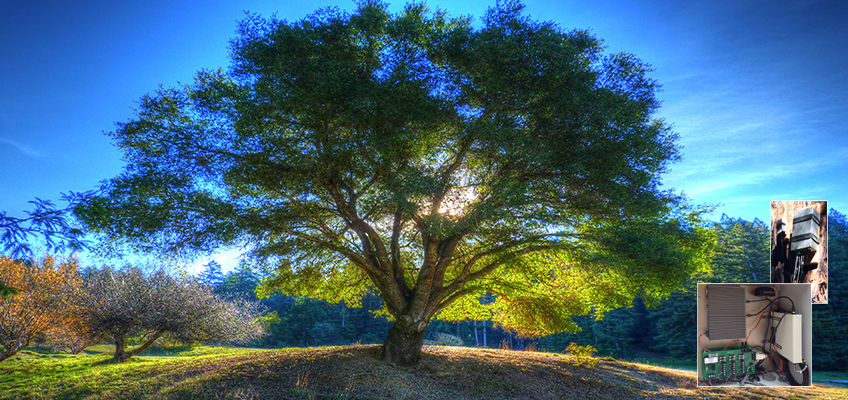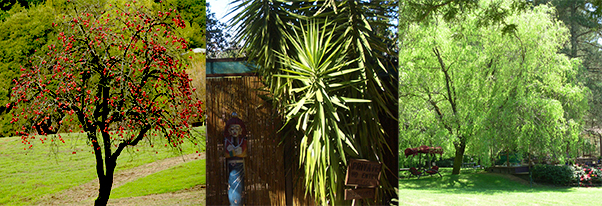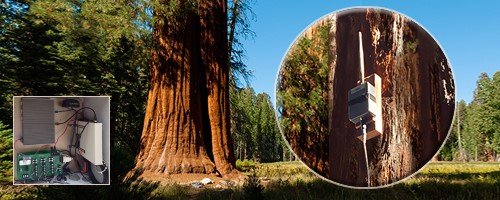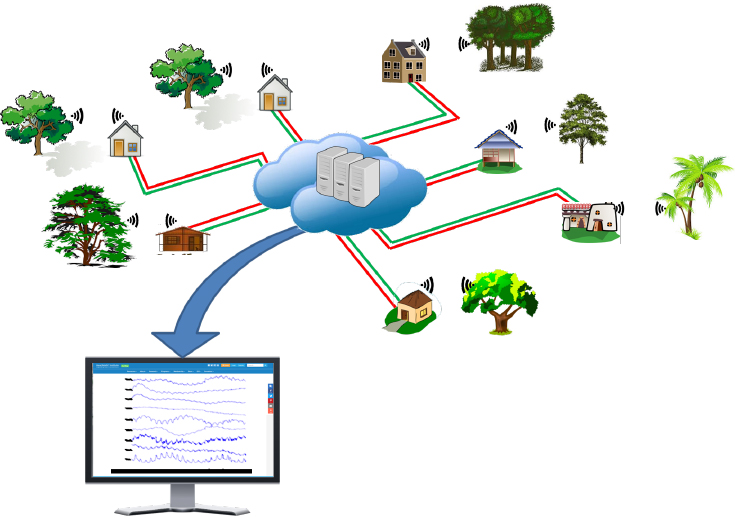
Global Tree Monitoring Network
Tree Research Project: Phase 2
Something about trees. … a walk in the forest, the spiritual experience of planting a tree, settling down against just about any kind of tree with book in hand. Can these "other beings" sense how humans feel about them? Do trees feel and are they affected by our emotions?
When the HeartMath Research Center launched its tree research project last year, we asked the question, "Why are we so in awe of the old oak and the ancient redwood?" In 2017, we will further explore the mysteries of trees in Phase II of what is now called the Global Tree Monitoring Network. We will expand the number and types of trees and varieties we monitor.
In Phase II, scientists will increase the current half-dozen redwood and oak trees being monitored by an additional 20 trees in the forest around the HeartMath Institute Research Center in the Boulder Creek area of Central California. Among these will be weeping willows, Douglas fir, yucca, madrone, and fruit trees such as apple, orange, pear and persimmon.

In Phase I of this project, which is part of HeartMath Institute’s (HMI) overall interconnectivity research, scientists monitored a half-dozen redwood trees in a grove. To do this, they had to create and test new equipment and software for efficiently and simultaneously measuring tree potentials from multiple trees and develop a way of sending the data to a lab. This preparation work for Phase II included developing low-power-use tree-potential amplifiers, tree electrodes, a data-acquisition system and a communication system.

What We Know Now
Based on observations of oak and redwood trees in different locations of HMI’s California research center, researchers have learned the following:
- Trees, like humans, have a circadian or day-night rhythm.
- Trees can elicit positive feeling states in humans.
- Tree have complex and different overall electrical voltage patterns, almost as if each has its own personality.
Read more about Phase 1: Interconnectivity Tree Research Project.
What We Will Explore
- Do the electrical responses in multiple trees correlate to events that trigger an emotional outpouring in large numbers of people?
- Do trees communicate energetically with each other over large distances?
- Are trees affected by human emotions?
- Does being in the biofields of trees have an uplifting effect on people?
- Can trees help inform us about approaching earthquakes?
Benefits of HMI Tree Research
- Provides a deeper understanding of how people and trees are connected.
- Collects information about how trees respond generally to human emotions and specifically to positive human emotions.
- Gathers important data that may aid in prediction of earthquakes – and saving lives.
- Eventually will establish a global network of tree-monitoring sites and a website† with live data from a redwood grove.
† When all equipment and systems are in place, our website will display data from all monitored trees, marking the launch of what will be the Citizen Scientist-Based Tree Project in which anyone can participate.
Global Tree Monitoring Network: What’s next?
In the months ahead, researchers will expand and test the network, including monitoring an additional 20 trees at strategic locations in the redwood forest around the HeartMath Institute campus. They will collect data on multiple types of trees, such as key tree stressors: For example, how does location affect the same or different varieties of trees?
Two important next steps are developing communications protocol software and hardware to enable monitoring of many trees worldwide and creating a public website where anyone can see the data from all monitored trees.

This broader scope in Phase II promises an array of interesting new data, which we will be able to collect by further developing communications protocol software and additional hardware.
Scientists will continue observing how temperature, light, gravitational pull on the earth and changes in its magnetic fields and other factors affect tree electrical potentials. We will keep you informed as we continue this fascinating journey.
Did you know, when you participate in HeartMath’s Monthly and Quarterly Giving program, you will receive a one-year membership.
We welcome your comments about the Global Tree Monitoring Network. Care to share a personal uplifting experience you or someone you know has had with trees.

